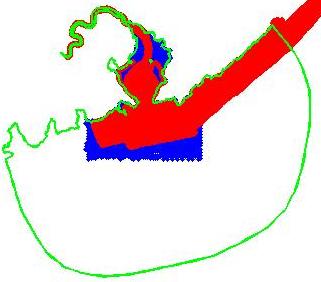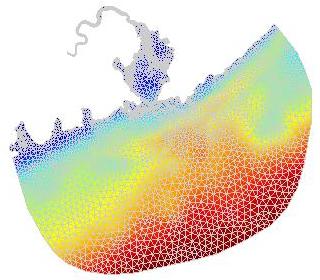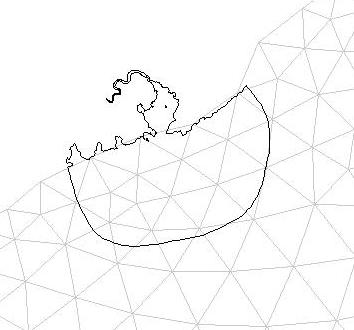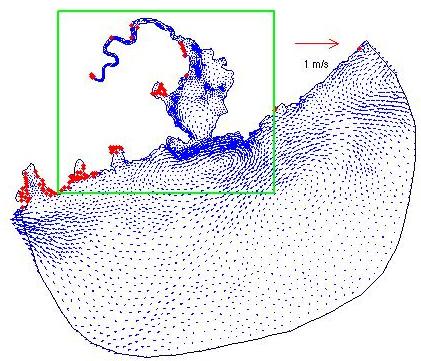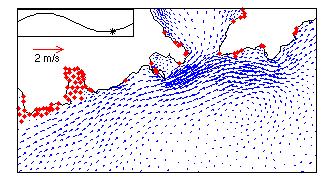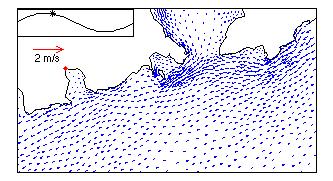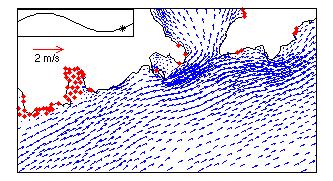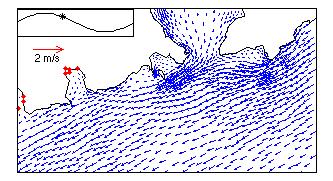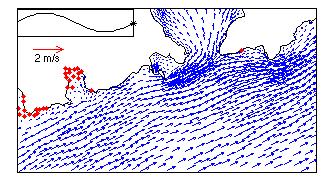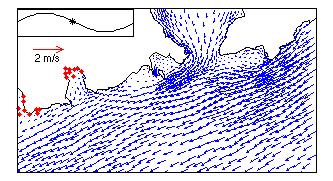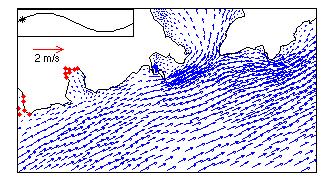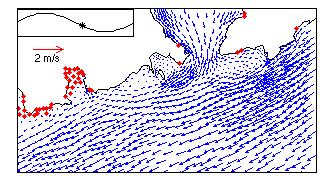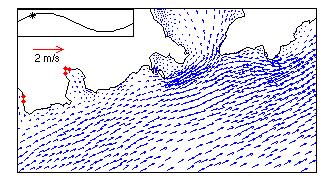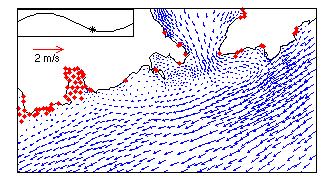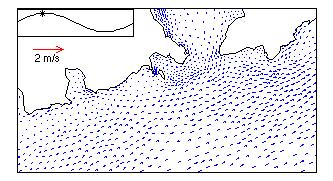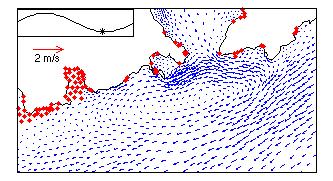A triangular grid was generated using BatTri (Biligili et al. 2004), a Matlab interface to the finite element grid generator Triangle and then refined using the grid generation program Genesis (developed by Florent Lyard). Bathymetry was obtained from three sources. In September 2001 the Ocean Mapping Group (OMG) conducted a survey of the Musquash Estuary. Although extremely dense, the coverage obtained from this survey does not include the entire area of the estuary. Additional bathymetric depths were obtained from the Canadian Hydrographic Services (CHS) chart of the area: LC-4116. As our model domain extends into the Bay of Fundy, we use depths from the 15 second resolution digitial bathymetry of the Gulf of Main created by E. Roworth and R.P. Signell (http://pubs.usgs.gov/of/of98-801/index.htm) for areas not covered by the other two data sets. The high water mark was manually digitized from an aerial photograph of the estuary and used as the model's coastline. The coverage of the bathymetric data used is shown below to the left.
In September 2001, the Ocean Mapping Group conducted an ADCP study of the Musquash Estuary. The purpose of this study was to better define the seaward boundary of the then proposed Musquash Marine Protected Area. Results from this study were used to help us decide the extent of our model domain and where to densify the nodes. In particular we chose to densify the grid to the South of Gooseberry Island extending to Western Head and to the South of Musquash Head.
The resulting mesh is shown above to the right. There are 4174 nodes and 7618 elements. The elements range in size from 234m2 to 124910m2. The depth ranges from -2.8m to 81.0m where a negative depth indicates a depth above mean sea level.
